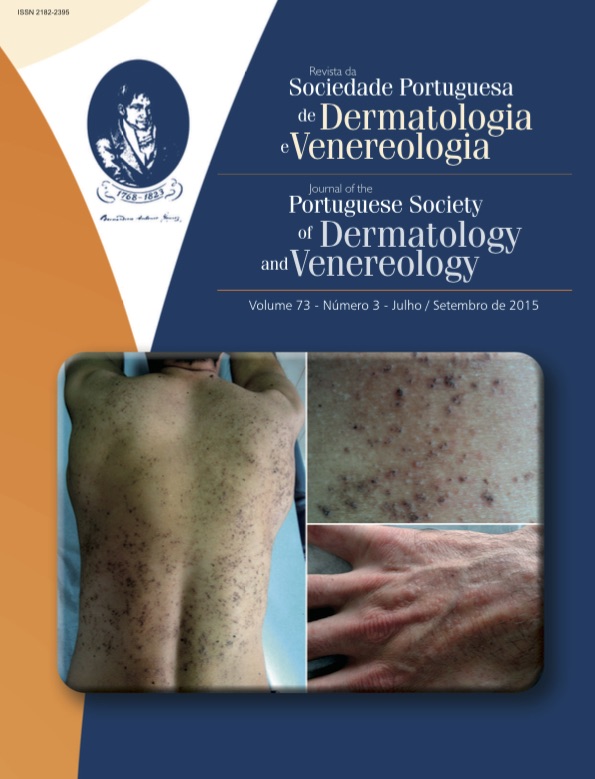HEMOCROMATOSE HEREDITÁRIA DO TIPO 1 E PORFIRIA CUTÂNEA TARDA - RELATO DE CASO DE UM DOENTE HETEROZIGOTO COMPOSTO PARA AS MUTAÇÕES C282Y E H63D
Resumo
A porfiria cutânea tarda (PCT) é uma doença do metabolismo das porfirinas caracterizada por fotossensibilidade intensa, associada a lesões bolhosas cobertas por crosta de difícil cicatrização, cicatrizes atróficas e hipertricose em áreas fotoexpostas assim como alterações da função hepática. A hemocromatose hereditária (HH) é a doença genética autossómica recessiva mais frequente na população.
Apresentamos o caso de um doente saudável de 38 anos, referenciado por vesiculas na face, superfícies extensoras dos braços e dorso das mãos, associadas com hipertricose na região zigomática e quistos de mília no dorso das mãos. Análises laboratoriais mostraram um aumento dos níveis séricos e urinários das porfirinas, do ferro sérico e ferritina elevada. Um diagnóstico de porfiria cutânea tarda foi inferido com base na apresentação clínica, exame histopatológico e resultados laboratoriais. O estudo genético para as mutações do gene da hemocromatose hereditária revelou um doente heterozigoto composto para as mutações mais comuns: C282Y, H63D. A porfiria cutânea tarda pode ser um importante marcador cutâneo para pacientes com mutações do gene HH. A hemocromatose hereditária, se não tratada pode levar à cirrose hepática e carcinoma hepatocelular. Os sinais cutâneos podem ter um papel fundamental no diagnóstico precoce, evitando complicações futuras e possibilitando o aconselhamento genético e teste genético aos filhos dos doentes afectados.
Downloads
Referências
Sams H, Kiripolsky MG, Bhat L, Stricklin GP. Porphyriacutanea tarda, hepatitis C, alcoholism and hemochromatosis:
a case report and review of the literature. Cutis. 2004; 73:188-90.
Parkkila S, Niemelä O, Britton RS, Fleming RE, Waheed A, Bacon BR, et al. Molecular aspects of iron absorption
and HFE expression. Gastroenterology. 2001; 121:1489-96.
Papanikolaou G, Samuels ME, Ludwig EH, et al. Mutations in HFE2 cause iron overload in chromosome
q-linked juvenile hemochromatosis. Nat Genet. Jan 2004; 36:77-82.
Mehrany K, Drage LA, Brandhagen DJ, Pittelkow MR. Association of porphyria cutanea tarda with hereditary hemochromatosis. J Am Acad Dermatol. 2004; 51:205-11.
Lambrecht RW, Bonkovsky HL. Hemochromatosis and porphyria. Semin Gastrointest Dis.2002;13:109-19.
A. Ramírez-Santos D, González-Vilas J, García-Gavín J, Concheiro D, Sánchez-Aguilar D, Toribio J. Porfiria cutanea
tarda y hemocromatosis en Espana. Actas Dermosifiliogr. 2009;100:329-43.
Sarkany RP. The management of porphyria cutanea tarda. Clin Exp Dermatol. 2001;26:225-32.
Todos os artigos desta revista são de acesso aberto sob a licença internacional Creative Commons Attribution-NonCommercial 4.0 (CC BY-NC 4.0).








